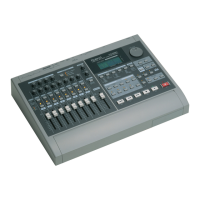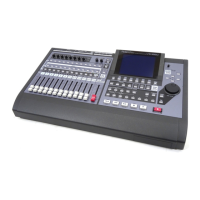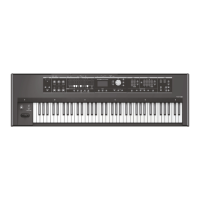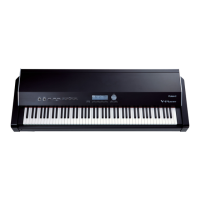11—Input and Track Channel Tools
Roland VS-2000 Owner’s Manual www.RolandUS.com 155
18. MUTE
Use a channel’s MUTE switch to quickly silence the channel’s signal. To quickly
mute more than one channel, use Mute mode (Page 141).
19. PAN (RSS)
The PAN knob sets the channel’s stereo position in the MASTER mix and when
you’re performing a stereo bounce (Page 193). PAN can be set from L63—all the
way to the left—to R63—all the way to the right.
When the channel’s parameters are linked with another channel via the ChLink
parameter, the appearance of the PAN parameter changes to show the stereo
image created by the two linked channels. Adjusting the PAN parameter’s value
shifts their entire stereo image left or right while maintaining the positions of
the two channels relative to each other.
The PAN/RSS button also allows you to assign the channel to the VS-2000’s RSS Pan
effect. To do this, cursor to “NRM” and turn the Time/Value dial to select RSS. If RSS
Pan is not yet enabled, the VS-2000 will ask if you’d like to go to the screen on which it
can be turned on. Press ENTER/YES to do so, or CANCEL/NO cancel the operation.
When the channel is assigned to RSS Pan, the parameter changes in appearance,
and controls the amount of the channel’s signal being sent to the effect.
When a channel is muted in Mute Mode, its MUTE switch is automatically turned on.
Use the PAN parameter only when the channel’s signal is being sent to a stereo
destination, such as the MASTER mix, a pair of tracks or a pair of outputs.
When RSS Pan is already enabled, “NRM” is shown in black. If the effect is not yet
turned on, “NRM” appears gray.
You can control a channel’s panning or RSS Pan send directly from the
VS-2000 using the CH PARAMETERS controls—see Page 167.
VS2000OMUS.book 155 ページ 2004年10月20日 水曜日 午後3時3分

